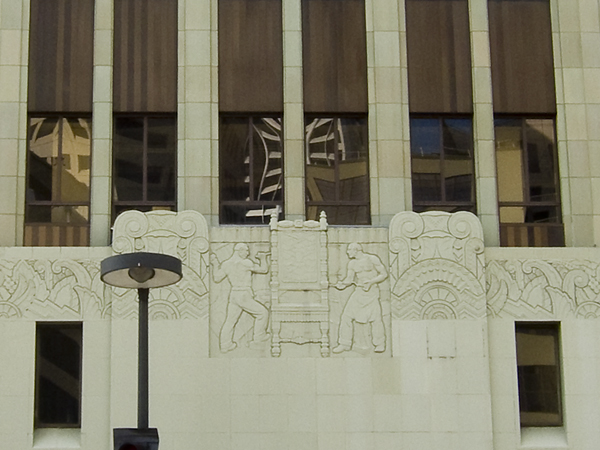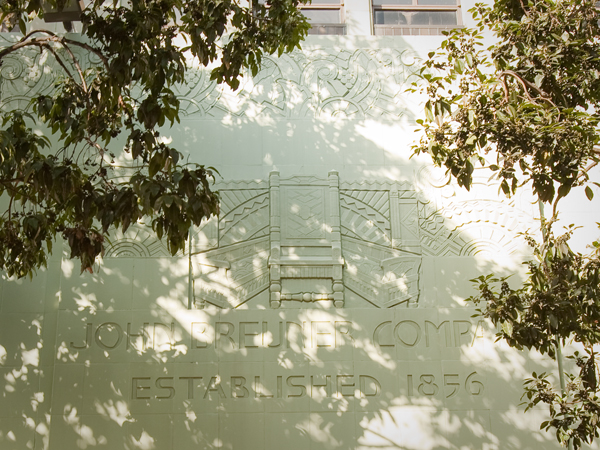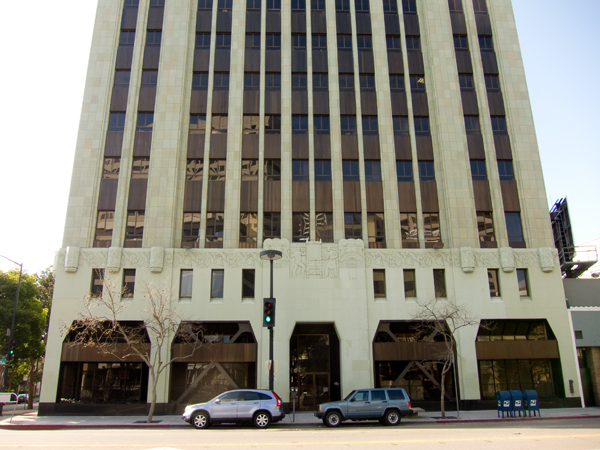I’m not done with the Paramount yet… but in an effort to be quick today (I’m a bit under the gun) I thought I’d share some photos of the lovely Breuner Building, designed by Albert Roller and built in 1931. It was constructed to house the John Breuner Company Furniture Store… indicative of this early history is the building’s front facade, another terra-cotta relief (in fact the entire building is clad in terra cotta glazed in a gorgeous sea-glass green) featuring two workers crafting a chair. It’s classic Art Deco – high stylized motifs incorporating images of industry with more organic forms (leaves, swirls), and of course, always the zig-zags!

The Breuner Company was established in 1865 (also indicated in relief on the exterior) but this store was opened decades later at “22nd and Broadway — despite the onset of the Great Depression — to join fellow retailers H.C. Capwell and I. Magnin, and the grand and elegant Paramount and Fox Oakland movie palaces.” (Annalee Allen) Here is a shot of the original building with the Breuner sign atop, and what it looks like now, the sign replaced by a lone flagpole.

Historical photo courtesy Christopher C. Curtis, Metrovation Brokerage

You can see that the lower portion of the building was changed significantly and large openings were cut into the ground floor that now harbor huge criss-crossed steel trusses, likely an earthquake retrofit.


Surprisingly, the Breuner Furniture Company still exists today, now called Breuners Home Furnishings. The company was originally founded by John Breuner, a German cabinetmaker turned gold miner, who “founded the company in 1856 in Sacramento, California when he realized selling [furniture] to gold miners was more lucrative than mining gold for himself.” Smart man. His sons Louis and John Jr. were responsible for the later move to Oakland. The store was ultimately shuttered in the 1970’s and the building currently consists of commercial office space, including the home of The California Genealogical Society.










